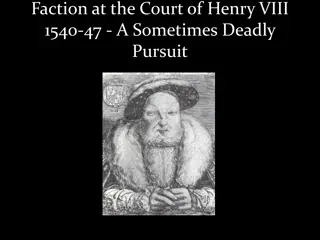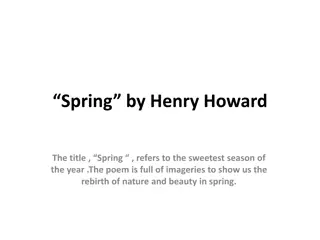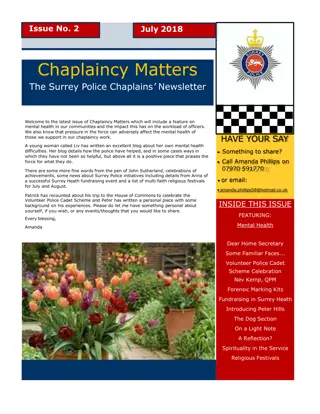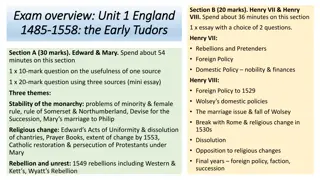Life and Contributions of Henry Howard, Earl of Surrey
Henry Howard, Earl of Surrey, a prominent figure in English literature, was born in 1517 and executed in 1547 for his loyalty to the Roman Catholic Church. He followed the Italian forms adapted by Wyatt, translating Petrarch's sonnets. Surrey's work contributed to the development of the English sonnet and the use of blank verse. His poems cover themes of love, friendship, and youth, showcasing his versatility and skill as a poet.
Download Presentation

Please find below an Image/Link to download the presentation.
The content on the website is provided AS IS for your information and personal use only. It may not be sold, licensed, or shared on other websites without obtaining consent from the author.If you encounter any issues during the download, it is possible that the publisher has removed the file from their server.
You are allowed to download the files provided on this website for personal or commercial use, subject to the condition that they are used lawfully. All files are the property of their respective owners.
The content on the website is provided AS IS for your information and personal use only. It may not be sold, licensed, or shared on other websites without obtaining consent from the author.
E N D
Presentation Transcript
HENRY HOWARD (Earl of Surrey)
1. Life 1. born 1517, Hunsdon, Hertfordshire, Eng.? died Jan. 13, 1547, London. 2. The eldest son of Lord Thomas Howard, 3rd Duke of Norfolk. 3. A friend of Henry of Fitzroy, Duke of Richmond. 4. did many campaigns and missions for the king, yet was executed due to his being loyal to Roman catholic church.
2. Contributions: 1. He acknowledged Wyatt as a master and followed him in adapting Italian forms to English verse. 2. He translated a number of Petrarch s sonnets already translated by Wyatt. 3. Surrey achieved a greater smoothness and firmness, qualities that were to be important in the evolution of the English sonnet. 4. Surrey was the first to develop the sonnet form used by William Shakespeare.
5. In his other short poems he wrote not only on the usual early Tudor themes of love and death but also of life in London, of friendship, and of youth. 6. The love poems have little force except when, in two Complaint[s] of the absence of her lover being upon the sea, he wrote, unusual for his period, from the woman s point of view. 7. Surrey s translation of Books II and IV of the Aeneid, published in 1557 as Certain Bokes of Virgiles Aenaeis, was the first use in English of blank verse, a style adopted from Italian verse.
3. The Poem based on translation of Rima 310 by Petrarch WHEREIN EVERY THING RENEWS, SAVE ONLY THE LOVER. The soote season, that bud and bloom forth brings, With green hath clad the hill and eke the vale; The nightingale with feathers new she sings, The turtle to her make hath told her tale.
Summer is come, for every spray now springs, The hart hath hung his old head on the pale, The buck in brake his winter coat he flings, The fishes flete with new repaired scale;
The adder all her slough away she slings; The swift swallow pursueth the fly s smale, The busy bee her honey now she mings-- Winter is worn that was the flowers' bale.
And thus I see, among these pleasant things Each care decays, and yet my sorrow springs.
ANALYSIS: 1. Rhyme scheme is: abab-abab-abab-aa 2. Syllabic monotony. 3. a picturesque description of the English countryside. 4. Each item symbolises the shedding of the old and the regeneration of the new.
5. hyperbaton(SOV). 6. anastrophe (Noun + Adjective). 7. the ending lines are in the expected syntax? 8. Contrast.























